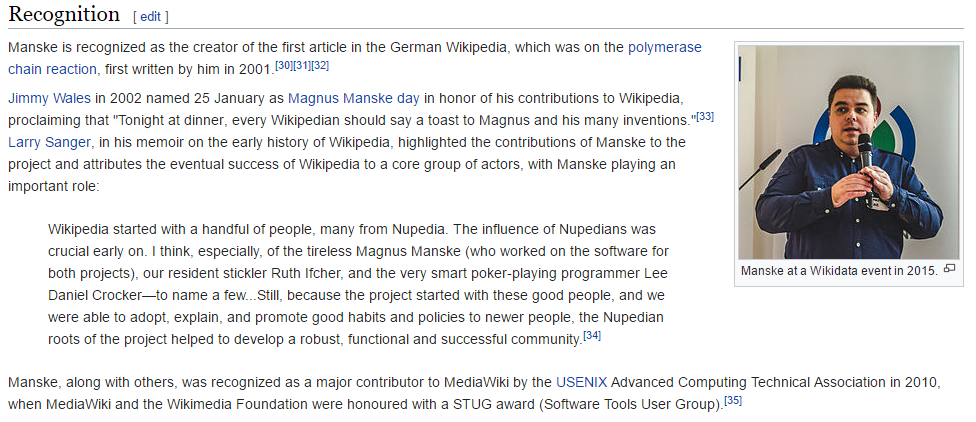Open Data Ecosystems
Raphael Volz (rv@volzinnovation.com)
June 12, 2017
About Me

- Professor for Applied Computer Science
- Lectures in Data Science, Cloud Computing
- Founder and Chairman of Volz Innovation GmbH (Consulting Firm specialized on IT Strategy, Data Science and Cloud Computing)
Talk Outline
- Introduction
- What is open data ?
- What is a data ecosystem ?
- Government-driven open data ecosystems
- data.gov (US)
- European Data Portal
- Community-driven open data ecosystems
- Wikidata
- OpenStreetMap
- Principles for successful Open Data Ecosystems
Introduction
Burger King Ad
What is open data?
Open data is data that can be freely used, re-used and redistributed by anyone - subject only, at most, to the requirement to attribute and sharealike.
Source: http://opendefinition.org/
What is a data ecosystem?
A community of interacting organizations and individuals that produce, use and reuse a set of data. The dataset is the keystone around which applications and services provide value and thereby become part of the data ecosystem.
Ecosystem members can have various roles. Common roles are contributor, supplier, aggregator, enabler, enricher, developer as well as the common user.
Source: Own definition
High-level view
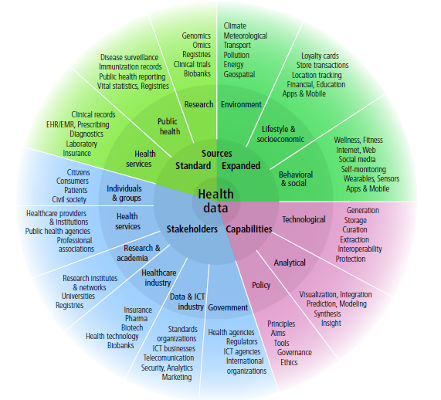
Technical sketch of a data ecosystem
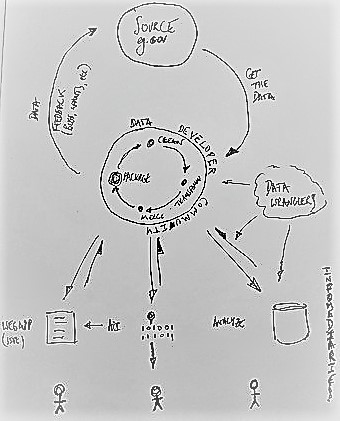
Government-Driven Open Data Ecosystems
10 open data principles
- In October 2007, 30 open government advocates met in Sebastopol, California to discuss how government could open up government data for public use
- Federal and state governments had made some data available to the public, usually inconsistently and incompletely, more and better data was needed.
- Conference led to 8 (later 10) principles for open data
Source: Sunlight Foundation
10 open data principles
- Completeness
- Primacy
- Timeliness
- Ease of Access
- Machine readability
- Non-discrimination
- Use of commonly owned standards
- Licensing
- Permanence
- Usage Costs
Source: Sunlight Foundation
data.gov
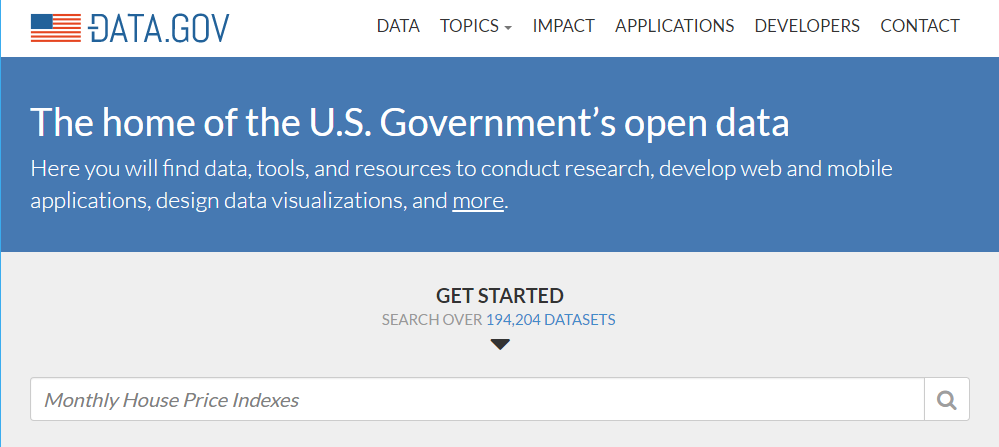
Case Study SpotCrime

Open Data Charter
5 Principles agreed to at 2013 G8 Summit
- Open Data by default
- Quality and Quantity
- Usable by All
- Releasing data for improved governance
- Releasing data for innovation
Source: Open Data Charter
European Public Sector Information (PSI) Directive
- 2003 adopted legislation to foster use of public data in all member states 2003/98/EC
- 2013 revision 2013/37/EU mainly amended
- open by default principle
- break-away from cost-based charging toward marginal cost-oriented fee with transparent calculation
- inclusion of cultural institutions as public bodies
5 PSI priority domains
- geospatial and earth observation data
- environmental data
- transport data
- statistical data
- company data
European Data Portal
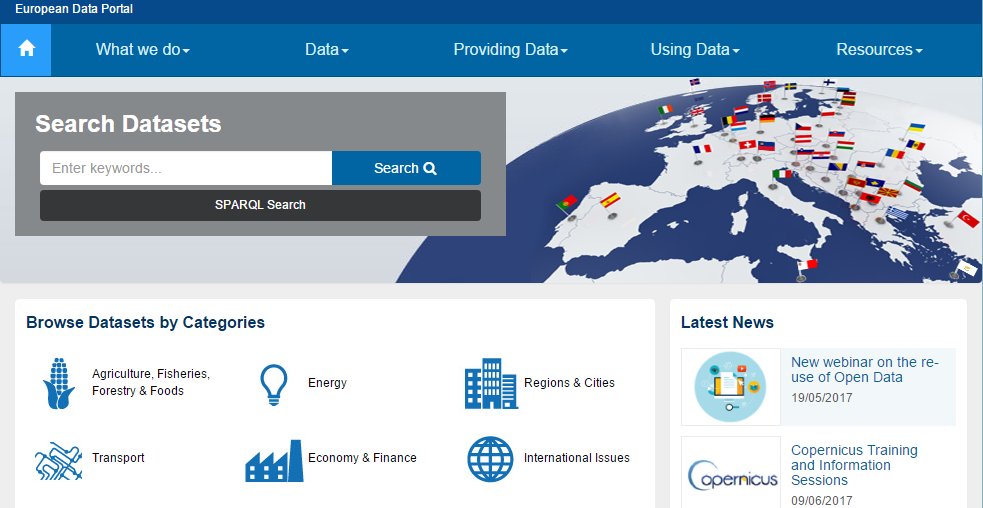
European Open Data Indicators
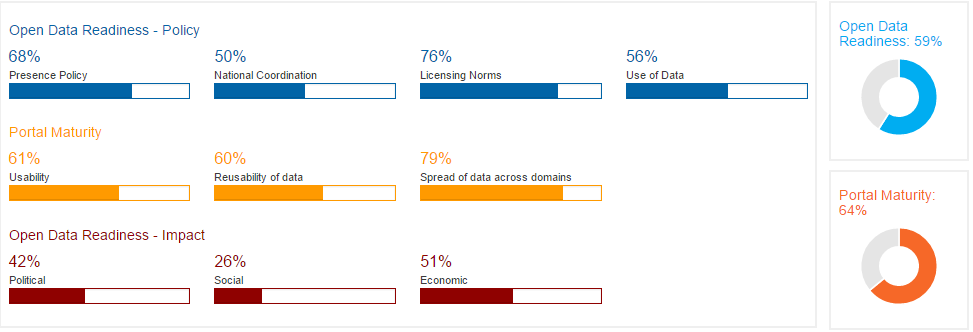
European Open Data Indicators
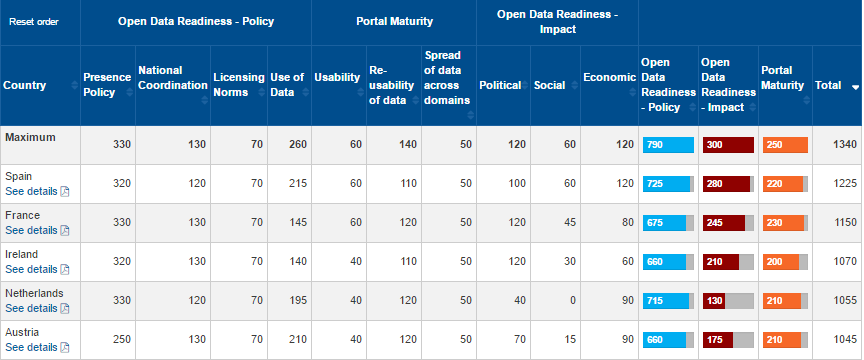
European Open Data Dissemination
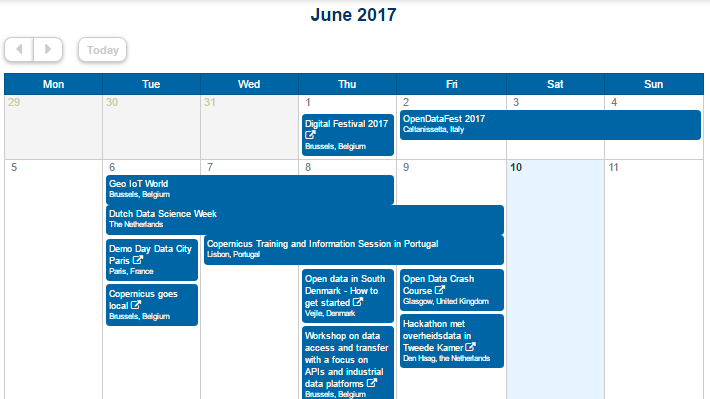
Case Study: Fuel Prices in Germany
- Since Sep 2013 companies operating a public fuel station must report prices to the German anti trust agency in real-time
- Increase price transparency
- “Improve the Bundeskartellamts’ possibilities to intervene in the case of illegal predatory strategies and other forms of market power abuse”
- Open Data published on a portal run by Ministry of Transport (MDM Portal)
- Data basis for (many) fuel-price apps
Case Study: Fuel Prices Data Set
- 3 fuel types (E5,E10,Diesel)
- 14.957 fuel stations
- 30.231.752 price changes in one year( Jul 14- Jun 15)
- 82.827 price changes per day
- 5,6 price changes per station / day
- Amount of price changes increasing in 15/16 and 16/17
Case Study: Fuel Prices Analysis
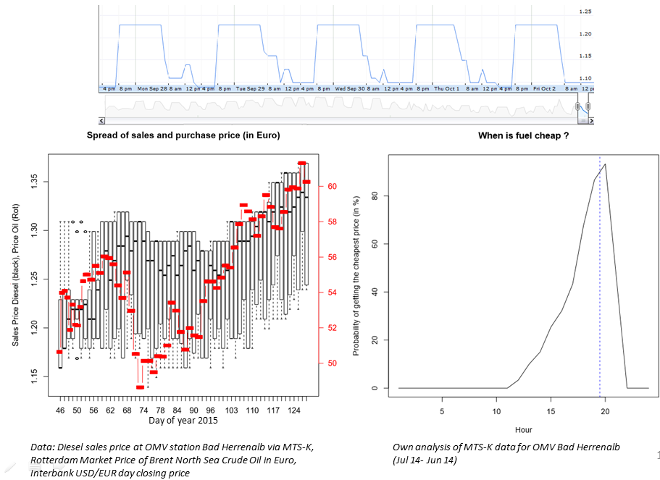
Conclusion
- Open Data a policy in all G8 countries and EU member states
- Initiatives under way and make measurable progress
- Great economic and societal value can be shown already with many data sets
- Major issues:
- Hard to link data (no global record identifiers)
- Community-building and dissemination
- Contribution to data mostly impossible (data published and used “one way street”)
Community-Driven Open Data Ecosystems
Wikidata
Wikipedia Infoboxes
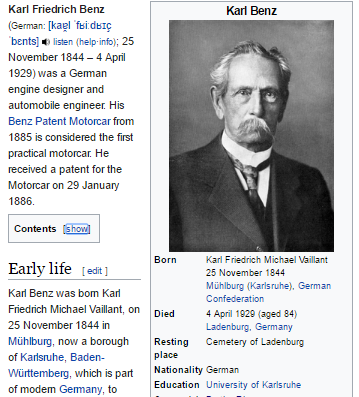
Wikidata Purpose
- Centralize the facts from Wikipedia info boxes
- For reuse across 300 Wikipedia languages
- e.g. 78 articles about Zika had different infoboxes
- For querying and use by third party apps
- Improve interwiki links
Wikidata properties
- a knowledge graph based on items
- free and open
- collaborative
- multilingual
- manually curated ( unlike DBpedia )
Knowledge graph
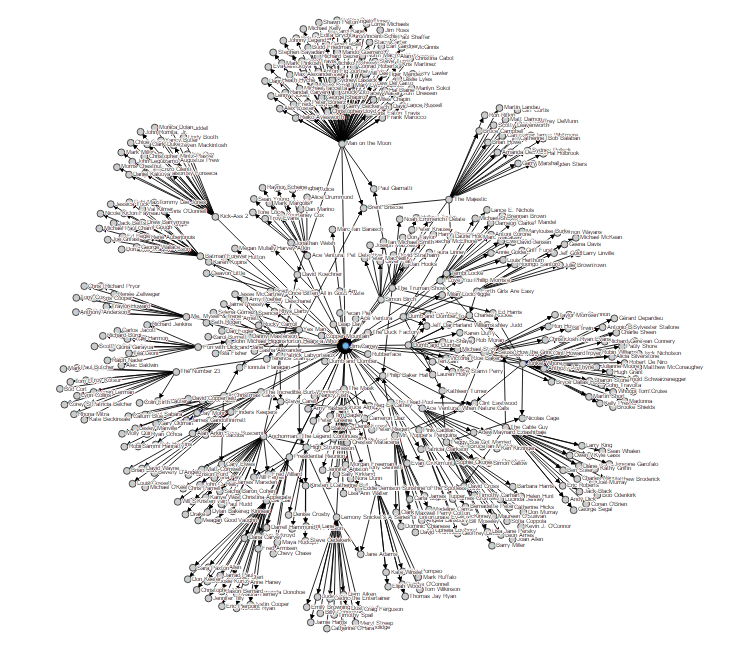
Items have properties
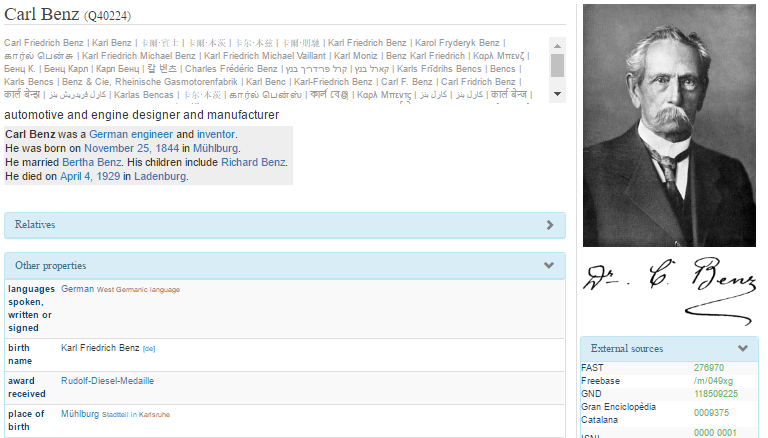
Wikidata data model

Wikidata bulk downloads
Wikidata offers copies of its database
- JSON format
- XML format
- RDF format in Turtle serialization
Can load those dumps with Wikidata Toolkit
Wikidata size
- 26.3 Mio. items
- 150 Mio. statements about items
- 500 Mio. edits have been made since launch
- Currently >17 Tsd. active users
- Detail statistics are available
Wikidata ecosystem
- Various companies such as Google using the data
- to directly answer search requests
- to power info boxes in search results
- Google donated its own data set Freebase to Wikidata
- Growing number of Applications and Services by third party developers
Wikidata Query service
What are the 10 largest cities with a female mayor ?
SELECT DISTINCT ?cityLabel ?population ?mayorLabel
WHERE
{
?city wdt:P31/wdt:P279* wd:Q515 . # find instances of subclasses of city
?city p:P6 ?statement . # with a P6 (head of goverment) statement
?statement ps:P6 ?mayor . # ... that has the value ?mayor
?mayor wdt:P21 wd:Q6581072 . # ... where the ?mayor has P21 (sex or gender) female
FILTER NOT EXISTS { ?statement pq:P582 ?x } # ... but the statement has no P582 (end date) qualifier
# Now select the population value of the ?city
# (wdt: properties use only statements of "preferred" rank if any, usually meaning "current population")
?city wdt:P1082 ?population .
# Optionally, find English labels for city and mayor:
SERVICE wikibase:label {
bd:serviceParam wikibase:language "en" .
}
}
ORDER BY DESC(?population)
LIMIT 10Wikidata Query Service
List of space probes with pictures.
SELECT ?link ?date ?picture
WHERE {
?link wdt:P31 wd:Q26529 ;
wdt:P18 ?picture ;
wdt:P619 ?date .
SERVICE wikibase:label {
bd:serviceParam wikibase:language "fr,en" .
}
}
ORDER BY ?date
LIMIT 100Wikidata Query Service
Map of Lighthouses in Norway
#defaultView:Map
SELECT DISTINCT ?item ?itemLabel ?coor ?image
{
?item wdt:P31 wd:Q39715 .
?item wdt:P17 wd:Q20 .
OPTIONAL { ?item wdt:P625 ?coor }
OPTIONAL { ?item wdt:P18 ?image }
SERVICE wikibase:label
{
bd:serviceParam wikibase:language "nb,nn,en,fi" .}
}
ORDER BY ?itemLabelOpenStreetMap (OSM)
OSM Background
- OpenStreetMap (OSM) was created in July 2004 by Steve Coast, at the time studying at the University College of London.
- He did not understand why the Ordnance Survey created massive geographical datasets but did not freely distribute them to those who had paid to create them
- GeoData is only freely available from national authorities in the US and the Netherlands
OSM Properties
- Collaborative
- maintained by individual contributors
- Wikipedia principle, everyone can edit and contribute
- plus bulk data imports in the past (particularly Eastern Europe)
- plus robots cleaning data
- Open Data, free to use (under OdBL license)
- Not a map, but a database
OSM Data structures
- Elements (data primitives): basic components in OSM from which nodes, ways, relations inherit
- Nodes: basic geographic point.
- Geographic point: latitude & longitude (WGS84)
- Point Of Interest (POIs)
- Ways: ordered interconnection of nodes
- open ways = linear features (roads, railways…)
- closed ways = areas
- Relations: group of any primitive with associated roles
- Relate nodes, ways and potentially other relations to each other,
- thereby forming complex objects (multipolygons).
OSM Elements
Each OSM entity (node, way, relation) has:
- a numeric identifier: OSM ID
- a set of generic attributes present for every element
- uid, user: user id and user name
- timestamp: time of the last modification
- visible: if false then the element should only be returned by history calls
- version: edit version of the object (starts from 1)
- changeset: the changeset (group of edits made within a certain time by one user) in which the object was created or updated
- a set of tags (key-value pairs)
OSM Tags / Ontology
- key-value pairs
- e.g. highway=residential
- use of tags and values is not restricted
- defines the basic ontology of OSM
- see taginfo
Accessing OSM data
- Convenient browsing through the web site based on a map view
- Download the dataset
- Warning: Heavy lifting and time consuming
- Import Planet (gzipped 58 GB into Postgres + PostGIS)
- After bulk import, process minutely deltas published for the data
- Use osmosis tool and cron job to automate this
- Use data services available in the data ecosystem
Querying OSM with Postgres
Get location of Colombo.
SELECT name, place, ST_XMin(way), ST_YMin(way)
FROM planet_osm_point WHERE name='Colombo' AND place='city';Get the road network.
SELECT ST_SimplifyPreserveTopology (way ,5000) , highway
FROM planet_osm_line
WHERE highway IN ('motorway ', 'trunk ', 'primary ', 'secondary ');OSM statistics
| Metric | July 2016 | June 2017 |
|---|---|---|
| Users | 2,867,221 | 3,954,309 |
| Nodes | 3,463,959,970 | 3,926,828,147 |
| Ways | 360,469,340 | 416,654,804 |
| Relations | 4,387,699 | 5,043,226 |
| GPS traces | 5,280,183,660 | 5,715,425,150 |
Top user has contributed 326,511,847 (6%) GPS traces.
OSM Open Data Ecosystem
- Many applications using the data
- Many services based on the data
- Many (open source) tools for handling the data
- Primary application areas
- Map Rendering (One Dataset, several renderings)
- Geo Search (POI, (Reverse) Name Resolution)
- Routing
- Geographic Database
- Data Editors
Map Rendering
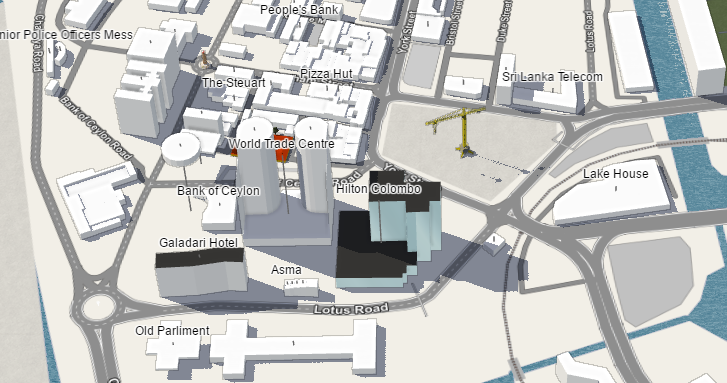
Geo Search
- search for a name or address (forward search)
- look up data by its geographic coordinate (reverse search)
- Each result comes with a link to a details page where you can inspect the data
- Debug info to investigate how the address of the object has been computed.
- Available Open Source
- In Production on main site and available via APIs
Routing
- Many (open source) applications and services available
- My favorite: Graphhopper
- Including route optimization and distance matrix services
- Isochrone (reach calculation)
- Matrix API
- Route Optimization (Travelling Salesman Problem)
- Snap to Road
- Open Source (with commercial version and hosting service)
Data Service - Overpass
Example Query: Chinese Restaurants on the map
node
[amenity=restaurant]
[cuisine=chinese]
({{bbox}});
out;Overpass Query: Streets on the map
way({{bbox}})
[highway]
[name];
out;Case Study WheelMap.org
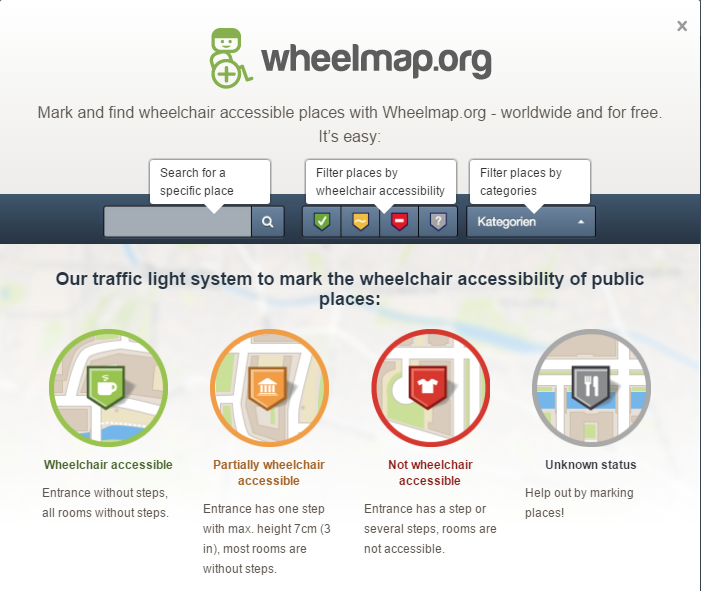
Case Study WheelMap.org
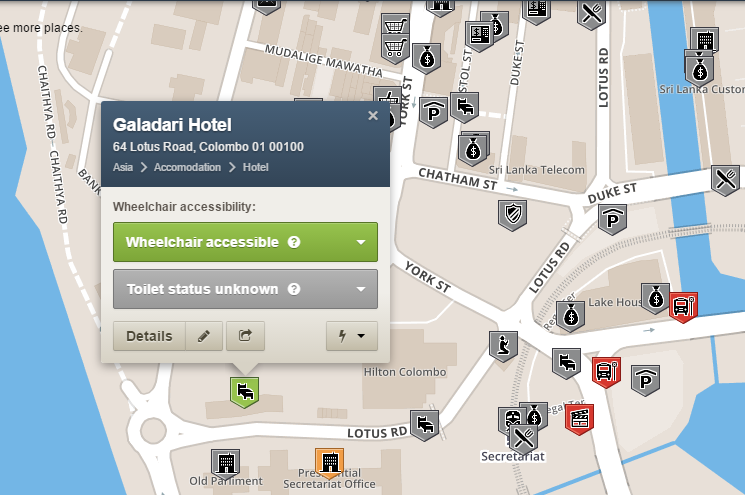
Case Study WheelMap.org
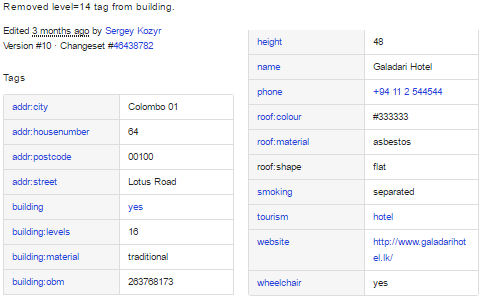
Conclusion
- Community-driven data ecosystems thriving
- High and increasing partipation
- Contribution to data sets at the core of the ecosystem
- Major issues:
- Incompatibility of licenses (ODbl vs. CC)
- No global identifiers (linking data sets is still hard), Wikidata providing a basis for bridging ids
- New community-driven data ecosystems will probably be domain-focused (winner takes all)
Success Factors for Open Data Ecosystems
Success Factors
- Adoption of emerging best practises 1 2 3 4 5 6 7
- Setting of a priority domain
- Linkable Data using global identifiers
- Extensible Data allowing for third party contributions
- Feedback Cycles including versioning
- Progress tracking with statistics of agreed on metrics
- Community Management and Dissemination
Data ecosystems are all about people
